Are you struggling to find the right tennis equipment for juniors? It’s a common problem many parents face when their child shows interest in tennis. With so many options available, choosing the right gear can feel overwhelming and confusing.
Imagine your child stepping onto the court with a racket that’s too heavy or too long. They might struggle to hit the ball properly, leading to frustration and possibly even losing interest in the sport. Or picture them playing with the wrong type of tennis balls, making it difficult to learn proper techniques and enjoy the game.
These issues can hinder your child’s progress and enjoyment of tennis. But don’t worry! We’re here to help you navigate the world of junior tennis equipment.
In this guide, we’ll walk you through everything you need to know about choosing the right tennis gear for juniors. From understanding racket sizes to selecting the perfect tennis balls, we’ll cover it all. We’ll even explore budget-friendly options and discuss when it’s time to upgrade your child’s equipment.
By the end of this post, you’ll be equipped with the knowledge to make informed decisions about your junior player’s tennis gear, ensuring they have the best possible start in their tennis journey.
Table of Contents
Understanding Junior Tennis Racket Sizes
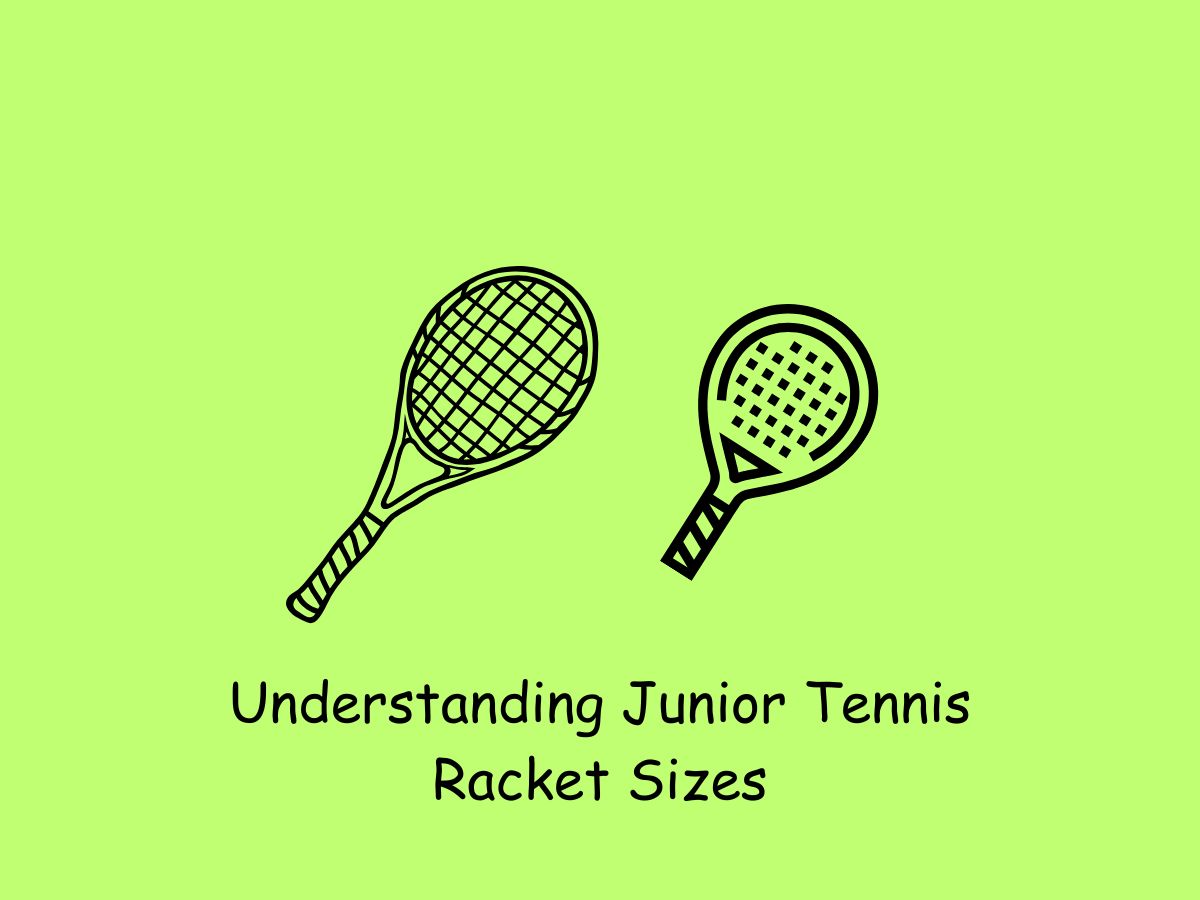
When it comes to junior tennis rackets, size matters a lot. Unlike adult rackets, which are all 27 inches long, junior rackets come in various sizes. These range from 17 inches for the youngest players to 26 inches for older juniors10. The right size racket can make a big difference in how well a child plays and enjoys the game.
Choosing the correct racket size is crucial for several reasons. A racket that’s too big or heavy can lead to injuries, especially in the wrist and elbow12. It can also make it hard for a child to control their shots. On the other hand, a racket that’s too small might hold back a child’s progress in tennis12. That’s why it’s important to find the right balance.
To pick the right size, you can use your child’s age as a general guide. But keep in mind that every child grows differently. Some kids might be taller or shorter than average for their age. So, it’s often better to use height as a guide when choosing a racket1. This way, you can ensure the racket fits your child’s body, not just their age.
Matching Racket Length to Age and Height
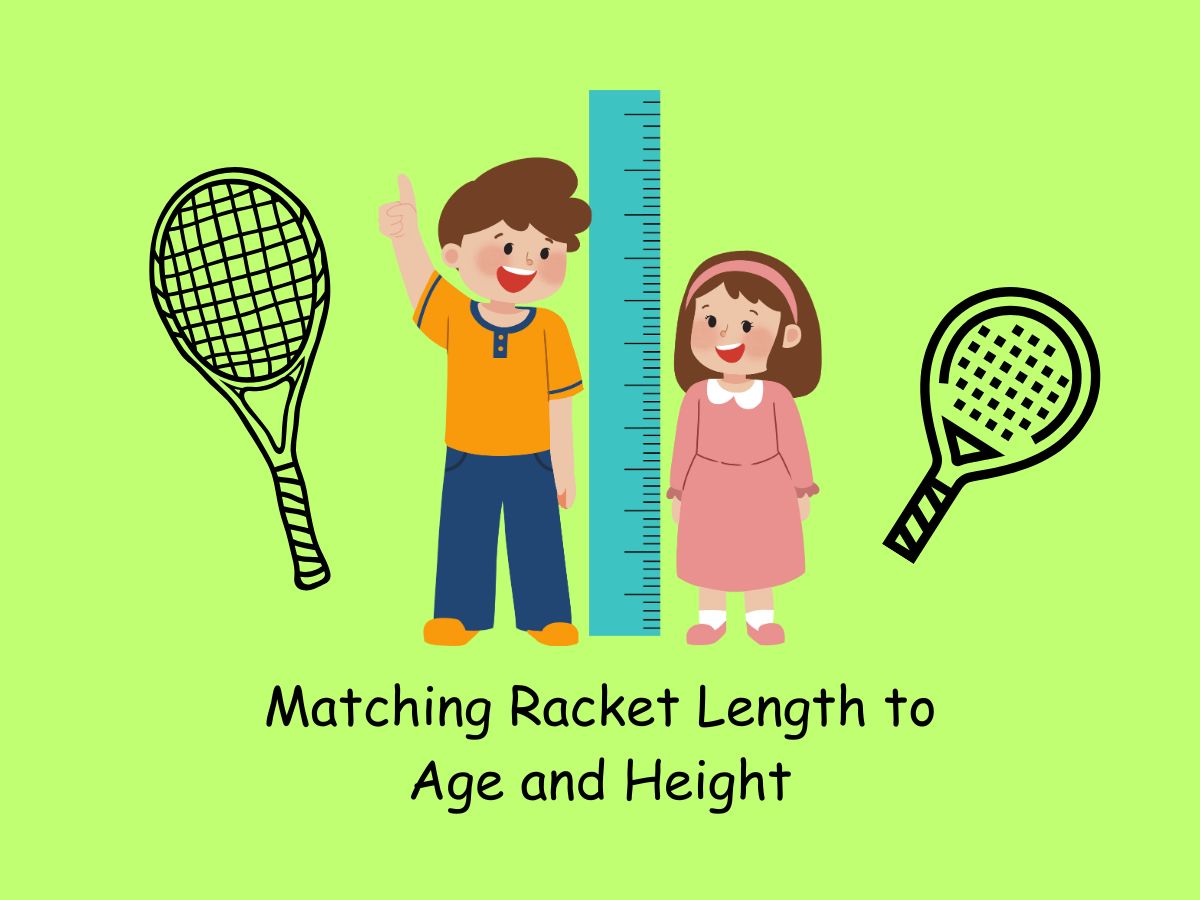
Matching a tennis racket to your child’s age and height is key to their success on the court. While age can be a starting point, height is often a more accurate measure for choosing the right racket length1. This is because children grow at different rates, and a racket that fits well will help them play better and enjoy the game more.
Here’s a simple guide to help you choose: For kids under 3’3″ (100 cm), a 19-inch racket works well. Children between 3’3″ and 3’10” (100-117 cm) usually do best with a 21-inch racket. For those 3’11” to 4’6″ (118-137 cm), a 23-inch racket is a good choice. And for kids 4’7″ and taller (138 cm+), a 25 or 26-inch racket is often the right fit24.
To make sure you’ve got the right size, try this simple test: Have your child stand straight and hold the racket by their side. If they can comfortably grip the handle and the racket head touches the ground, it’s likely the right size2. Remember, it’s better to have a racket that’s slightly small than one that’s too big. This helps ensure your child can control the racket and play comfortably.
Materials Matter: Aluminum vs. Graphite
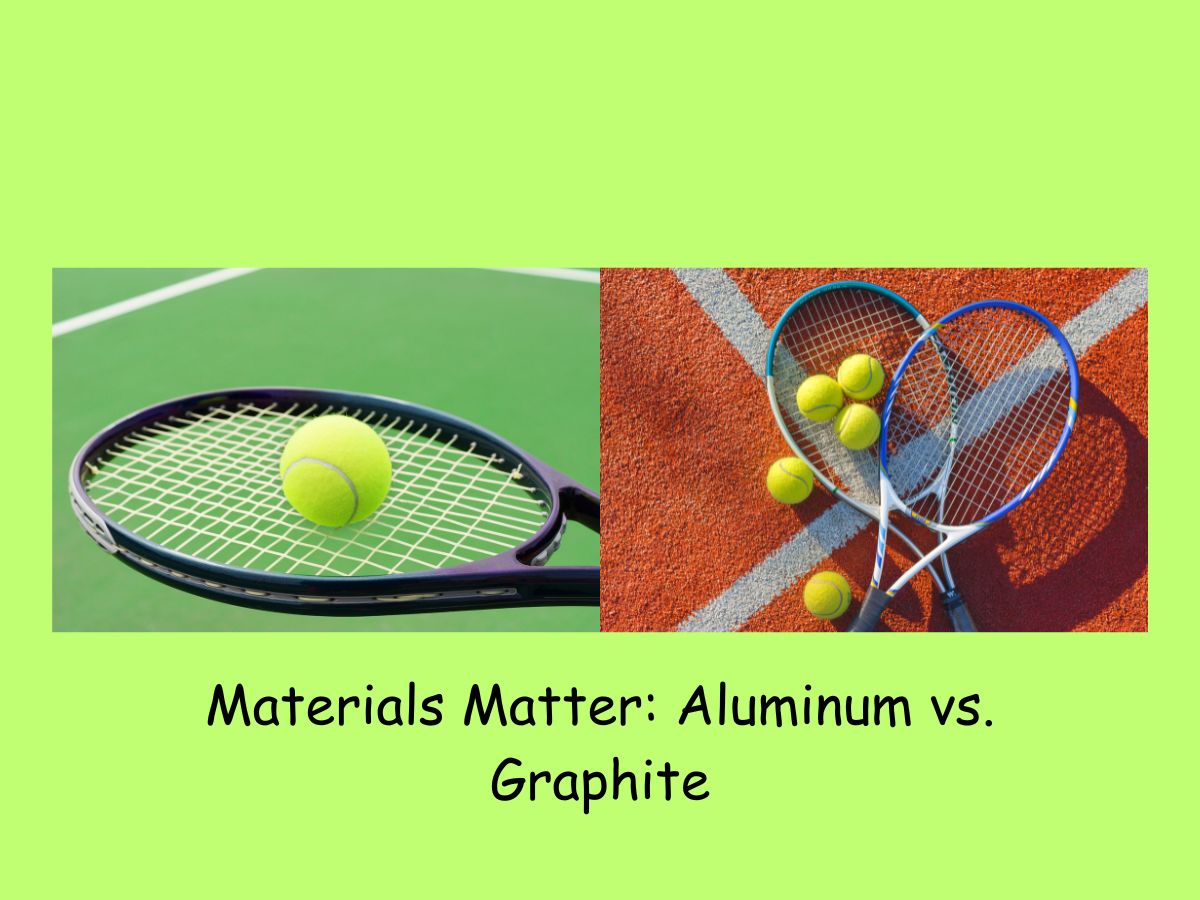
When it comes to junior tennis rackets, the material they’re made from can make a big difference. The two main materials used are aluminum and graphite, and each has its own benefits3. Understanding these differences can help you choose the best racket for your young tennis player.
Aluminum rackets are great for beginners and younger players. They’re strong, can handle rough treatment, and are usually less expensive6. You can find aluminum rackets in all junior sizes, from 17 inches to 26 inches3. These rackets are a good choice if your child is just starting out or if they tend to be tough on their equipment.
Graphite rackets, on the other hand, are better suited for more advanced junior players. They’re lighter than aluminum rackets and can help players generate more power and spin6. Graphite rackets are available in sizes from 23 inches to 26 inches3. While they’re more expensive and can break if dropped or thrown, they offer better performance for competitive play. Some rackets even use a mix of aluminum and graphite, called composite, which offers a balance of durability and performance3.
The Importance of Proper Grip Size
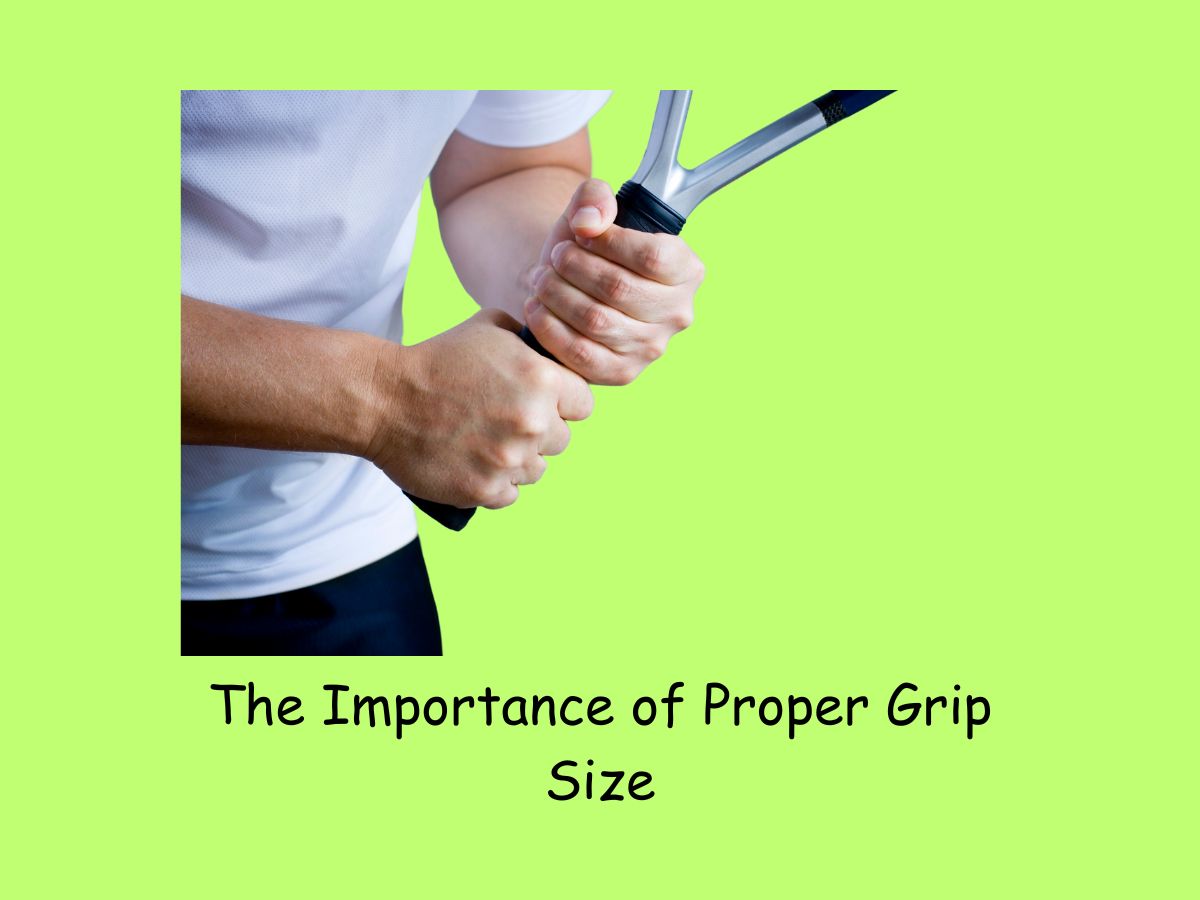
Choosing the right grip size for a junior tennis player is crucial. It affects comfort, control, and even helps prevent injuries. A well-fitted grip allows young players to develop good technique and reduces strain on their hands and wrists.
Junior racket grips are smaller than adult grips to fit smaller hands. They usually range from 3 to 4 inches around. For kids aged 4-6, a 3-inch grip is often best. As they grow, the grip size increases. By age 12 and up, they might use a 3 1/2 to 4-inch grip, depending on their hand size1.
A grip that’s too big can cause problems. It makes it harder for kids to control the racket and can lead to wrist, elbow, and hand strain. On the other hand, a grip that’s too small might not provide enough support. If you’re not sure, it’s better to choose a smaller grip. You can always add an overgrip to make it slightly bigger if needed14.
Selecting the Right Tennis Balls for Juniors
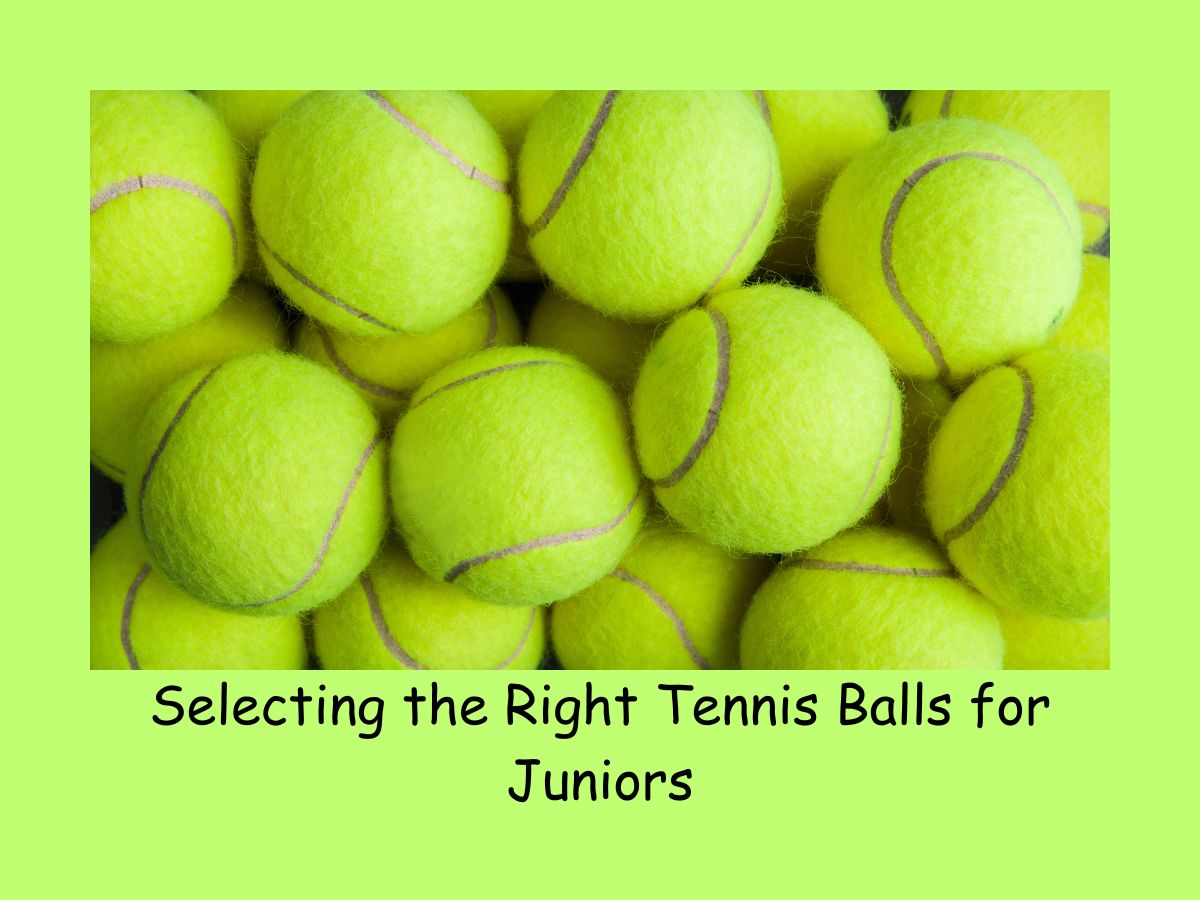
Choosing the right tennis balls is just as important as picking the right racket for junior players. Junior tennis balls are designed to bounce less and move slower than regular tennis balls. This helps kids learn and enjoy the game more easily2.
There are three main types of junior tennis balls, each suited for different age groups and skill levels. Red balls are the slowest, moving 75% slower than regular balls. They’re perfect for kids 8 and under. Orange balls are 50% slower and work well for 9 to 10-year-olds. Green balls are only 25% slower and are great for kids 11 and up who are almost ready for regular tennis balls25.
These special balls help young players in many ways. They give kids more time to hit the ball, making it easier to learn good techniques. The slower speed also helps build confidence and makes the game more fun. As kids grow and improve, they can move up to faster balls, gradually working their way to regular tennis balls38.
Essential Tennis Gear Beyond the Racket
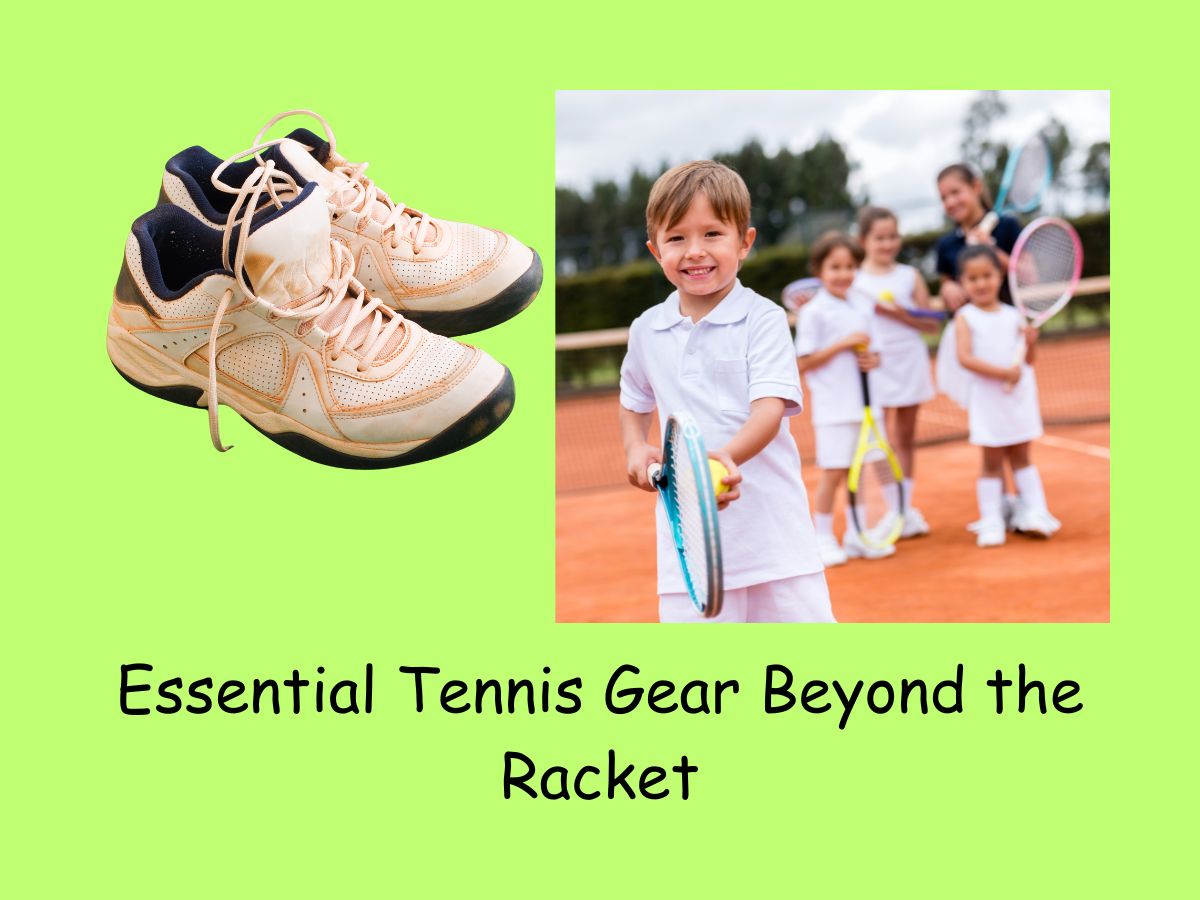
While a good racket is important, there’s other gear that junior tennis players need. The right equipment can make playing more comfortable and enjoyable for kids.
First, let’s talk about shoes. Comfortable trainers are a must for young players. They help prevent slipping and reduce the chance of foot or ankle injuries. Look for shoes that fit well and provide good support3.
Next, consider clothing. Kids should wear comfortable, breathable clothes that allow them to move freely. Many players prefer lightweight, moisture-wicking fabrics that keep them cool and dry during play.
Lastly, don’t forget about accessories. A good tennis bag can help kids keep their gear organized. Some players also like to use wristbands to wipe away sweat. And of course, a water bottle is essential to stay hydrated during practice or matches. Remember, the right gear can help make tennis more fun and comfortable for young players3.
Brands to Consider for Junior Tennis Equipment
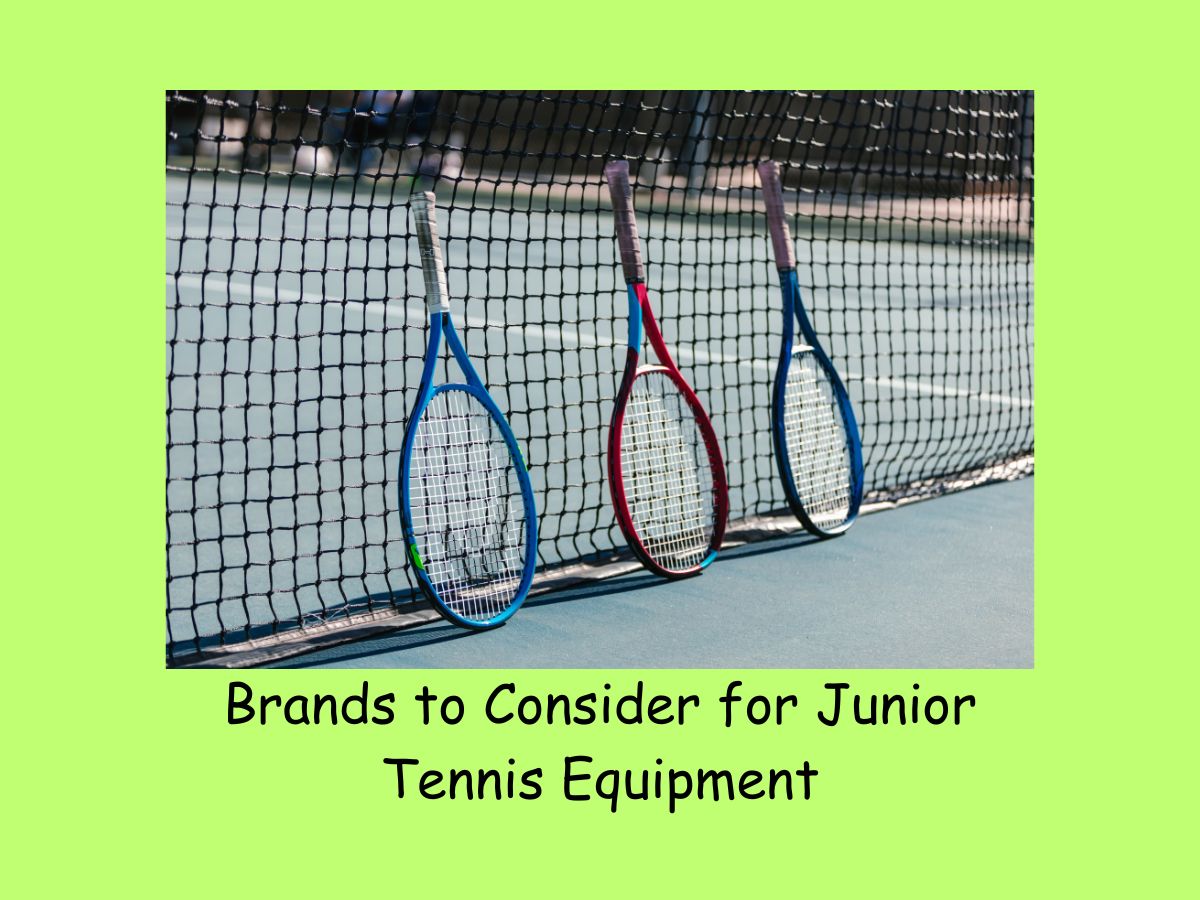
When shopping for junior tennis equipment, several trusted brands stand out. Babolat, HEAD, Wilson, and Yonex are among the top names in the industry. These companies offer a wide range of junior rackets designed for different ages and skill levels.
Babolat is known for its high-quality junior rackets that provide a good balance of power and control. They offer options for players from ages 4 to 12 and beyond. HEAD also has an extensive line of junior rackets, with models suitable for various playing styles and ages. Their rackets often incorporate technologies similar to those found in adult versions, helping young players develop their skills.
Wilson is another excellent choice for junior tennis equipment. They offer rackets for all age groups, from beginners to more advanced junior players. Yonex, while less common, produces some great junior rackets known for their quality and performance. Other brands to consider include Dunlop, Prince, and Tecnifibre, each offering unique features that might suit your child’s needs.
Budget-Friendly Options for Beginners
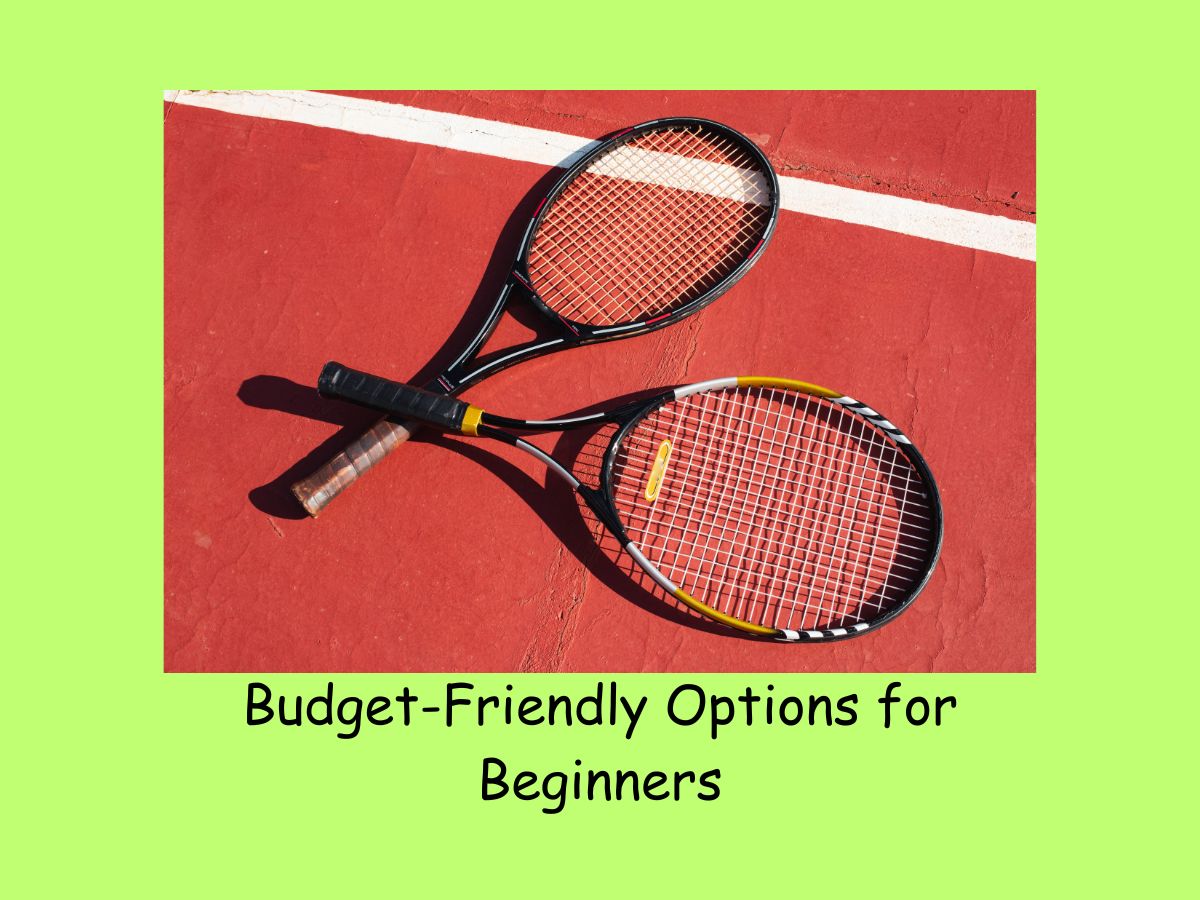
For those just starting out in tennis, there are plenty of affordable options that don’t compromise on quality. The Wilson Tour Slam is a great choice for beginners on a tight budget. It’s priced under $50 and offers good value with its large sweet spot and decent power. While it may not be suitable for advancing to higher skill levels, it’s perfect for trying out the sport or for occasional play.
Another budget-friendly option is the Head Ti S6, often considered the best beginner tennis racquet under $100. It’s lightweight, has a large frame for a bigger sweet spot, and is great for generating power from the baseline. This racquet can serve players well as they improve their skills, making it a good investment for those who plan to play more regularly.
For high school players or those looking for a racquet that can grow with them, the Babolat Boost Drive is worth considering. It’s reasonably priced and offers a good balance of power and control. It’s also pre-strung, saving you the additional cost of stringing. Remember, while these options are budget-friendly, they still provide good quality and performance for beginners and recreational players.
When to Upgrade Your Child’s Tennis Gear
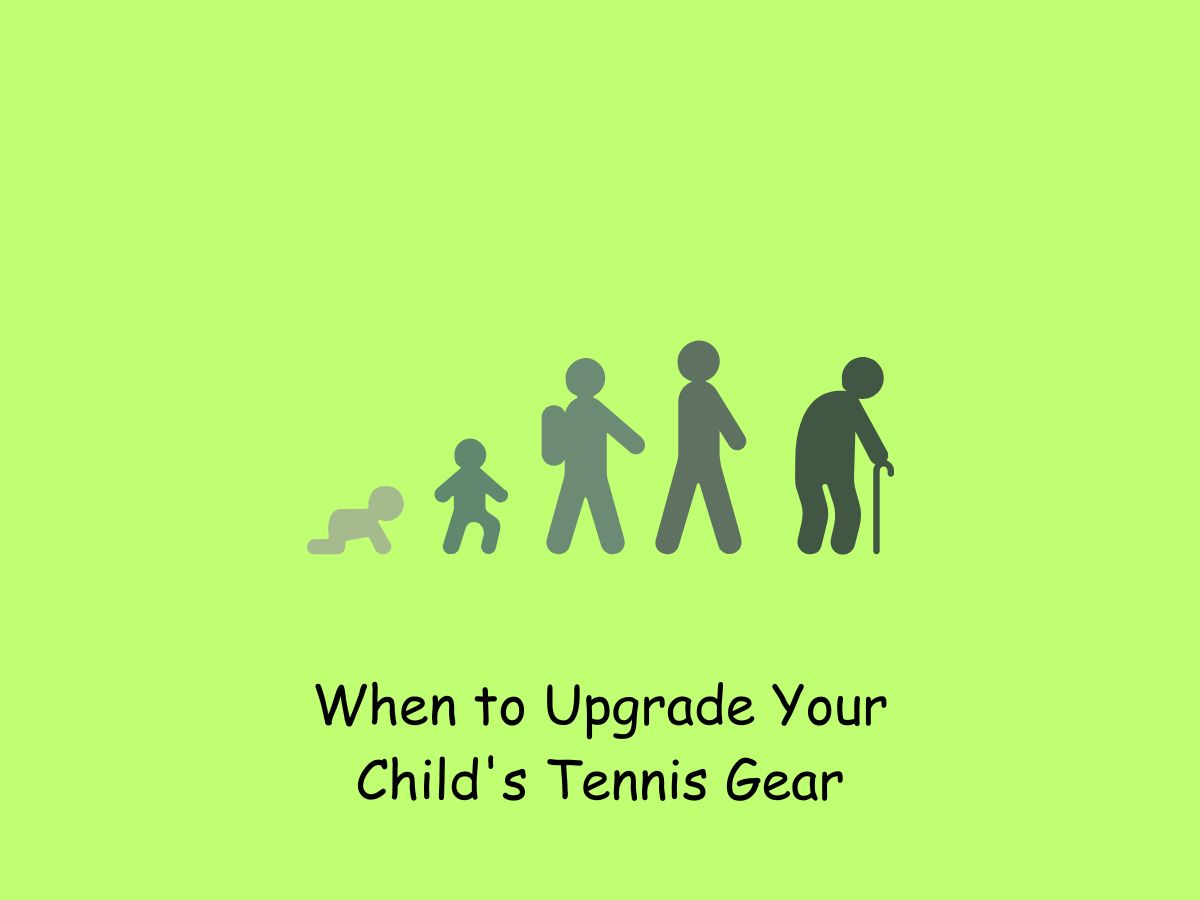
Knowing when to upgrade your child’s tennis gear is crucial for their development in the sport. Most manufacturers recommend a 26″ junior frame for players between 10 and 12 years old. The transition to a full-sized 27″ adult frame often happens around middle school or high school age3.
However, the right time to upgrade depends more on your child’s physical development and skill level than their age alone. Signs that it might be time for an upgrade include your child comfortably hitting with standard pressure tennis balls, swinging the racquet freely, and having developed good swing technique. If your child is playing more seriously, consider upgrading every other year6.
It’s important not to rush the upgrade process. Moving to an adult frame too early can lead to discomfort and fatigue, as these racquets are heavier and stiffer. On the other hand, waiting too long might hold back a rapidly developing player. Listen to your child’s feedback about how the racquet feels during play. Remember, the racquet should fit your child’s current abilities and physical strength, much like how you’d buy clothes as they grow6.
Conclusion
So, are you ready to make smart choices about your junior player’s tennis gear? Use this info to find the perfect equipment for your child. By using these ideas, you can help them enjoy tennis even more. It’s about finding the right fit and helping them grow.
Remember, picking the right gear can boost their confidence and skills. It will also make the game more fun. So, take your time and make informed decisions. Your child’s tennis journey will be better because of it.
If you have more questions or need extra help, feel free to contact me at jaiden@jaidensmedia.com. I’m here to support you in ensuring your child has the best tennis experience possible!
FAQs
What size racket should I get for my 6-year-old?
A 21-inch racket is typically good for kids around 6 years old, but it’s best to also consider their height. If they are between 3’3″ and 3’10” (100-117 cm), a 21-inch racket should work well.
What’s the difference between aluminum and graphite rackets?
Aluminum rackets are strong and budget-friendly, great for beginners. Graphite rackets are lighter and offer better performance for more advanced players.
How do I know if the grip size is right for my child?
A good grip allows them to comfortably hold the racket without straining. If unsure, choose a smaller grip; you can always add an overgrip to make it bigger.
What type of tennis balls should my child use?
Red balls are for kids 8 and under, orange balls for 9-10 year olds, and green balls for 11 and up who are almost ready for regular tennis balls.
Besides a racket, what other gear does my child need?
Comfortable trainers, breathable clothing, a tennis bag, and a water bottle are all essential.
Which brands are best for junior tennis equipment?
Babolat, HEAD, Wilson, and Yonex are top brands known for their quality junior rackets.
What are some budget-friendly racket options for beginners?
The Wilson Tour Slam and Head Ti S6 are excellent, affordable choices for starting out.
When should I upgrade my child’s tennis racket?
Upgrade when they comfortably hit with standard tennis balls, have good swing technique, and are playing more seriously.
Can using the wrong size racket lead to injuries?
Yes, a racket that’s too big or heavy can cause wrist and elbow injuries.
Where can I get more information on choosing junior tennis equipment?
Feel free to reach out with any questions at jaiden@jaidensmedia.com for more personalized advice.
